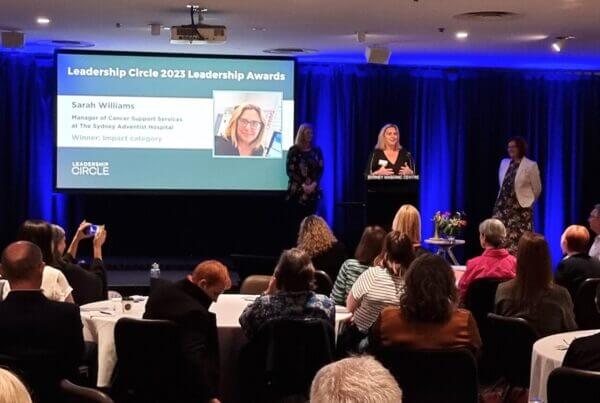An estimated 85% of Americans plan to travel for vacation this summer, according to the Summer Travel Survey & Trends 2023 report, published by The Vacationer. And yet, millions of vacation days will still go unused this year. Hundreds of millions. In a survey by the U.S. Travel Association, more than half of Americans leave vacation time on the table—768 million days’ worth in 2018, alone.
Worse, nearly a third of U.S. employees don’t even have access to paid time off, and more than half of those who do report working while on vacation. I bet you’ve done it. Checked your email “real quick” while enroute to the beach. Hopped on “just one” work call on your day off. Tried to “knock out” a project over the weekend.
This is in sharp contrast to workers in other parts of the world, who take time off more seriously. Most European countries offer a minimum of 20 days of paid leave each year, with Spain encouraging the most time off in Europe—39 days between PTO and paid holidays. Similarly, Australians typically have a minimum of four weeks of annual leave and enjoy the common practice of taking “long service leaves,” or extended vacations.
Is it any wonder, then, that the U.S. has earned a reputation as the “burnout nation”? I’m not saying that no American ever takes time off or that U.S. workers are the only ones in the world who experience professional burnout. But it certainly seems like we could learn something from our global colleagues.
The Benefits of Taking a Break
Part of achieving the professional goals you set for yourself is knowing when to rest—and when to give your goals a rest. In addition to lowering your blood pressure and raising the quality of your sleep, stepping away from work offers benefits that boost your productivity, clarify your focus, and rejuvenate your spirit.
Vacation is a time to mentally unwind. Taking a break gives you the opportunity to reduce your cognitive overload and recuperate from mental fatigue. This clears out the cobwebs and makes room for your brain to entertain new ideas, give energy to fresh perspectives, and embrace new information. Plus, time away from the office likely means time spent doing hobbies and activities that aren’t part of your 40-hour-a-week work life, stimulating your mind in ways that are different from your daily grind.
Use this to your advantage. A break from work, whether a three-day weekend, a weeklong backyard staycation, or two weeks in the Maldives, is a prime opportunity to gain perspective into what you do, how you’re doing it, and what you can do differently. Here are three things you can do on vacation to lean into Creative competencies that, ultimately, will help you at work:
- Relax and Reflect
Stepping away from work provides the opportunity to reassess your goals, values, and priorities so that you can gain clarity and make any necessary adjustments based on what truly matters to you. At the heart of goal setting and professional achievement lies keen self-awareness and visionary thinking. Time away from the tedium and repetition of everyday tasks and the constant pressure of a “push through” mentality allows you to step back and see the whole picture with new eyes. Dream big. Envision goals and outcomes that excite and motivate you.
Target Creative Competencies:
-
- Balance: The ability to keep a healthy balance between business and family, activity and reflection, work and leisure; the tendency to be self-renewing and to handle life’s stress without losing the self.
- Personal Learner: The degree to which a leader shows a strong and active interest in personal and professional growth; the extent to which a leader pursues growing in self-awareness, wisdom, knowledge, and insight.
- Integrity: How well a leader adheres to the set of values and principles they espouse; whether they “walk the talk.”
- Cut Loose
Put the PowerPoint down and back away from that Excel sheet. Breaks naturally foster an attitude of playfulness and curiosity, so, while on a break from work, do fun stuff. Ask questions. Challenge assumptions. Goof around. Hang with your friends. Get lost in a book. Pursuing things that you enjoy and spending time with people you care about can reignite your sense of wonder and fascination with the world and help you engage with renewed enthusiasm when you return. A curious mind embraces exploration, experimentation, and innovation.
Target Creative Competencies:
-
- Caring Connection: A leader’s interest in and ability to form warm, caring relationships.
- Fosters Team Play: The ability to foster high-performance teamwork among direct reports, across the organization, and within teams.
- Personal Learner: The degree to which a leader shows a strong and active interest in personal and professional growth; the extent to which a leader pursues growing in self-awareness, wisdom, knowledge, and insight.
- Mix It Up
How many awesome ideas have you gotten in the shower? Or while running, cooking, fishing, or driving? Often, your mind will continue to work on problems in the background, while you focus on other things. As such, the benefits of small work breaks, like going for a walk, moving from your desk to a coffee shop, or spending 10 minutes in a game on your phone, are increased exponentially when you take big work breaks. Instead of a walk, take a hike. Instead of a coffee shop, explore a new city or country. Instead of a video game, go to Vegas with your buddies. All of these expose you to new environments, people, and information. Embracing the discomfort that comes from different and unfamiliar experiences can trigger a shift in perspective and spark new connections and ideas.
Target Creative Competencies:
-
- Composure: A leader’s ability, amid conflict and high-tension situations, to remain composed and centered, and to maintain a calm, focused perspective.
- Courageous Authenticity: The willingness to take tough stands, bring up risky issues, and openly deal with difficult relationships.
- Decisiveness: The ability to make decisions on time, and the extent to which a leader is comfortable moving forward in uncertainty.
Conclusion
Leaning into Creative competencies that foster flexibility, experimentation, collaboration, and self-awareness can transform the way you set goals and pursue excellence. It can turn your professional to-do list into a living, purpose-driven quest to unlock your full potential as a leader. And, as with any quest, you need to be well-rested for the journey.




